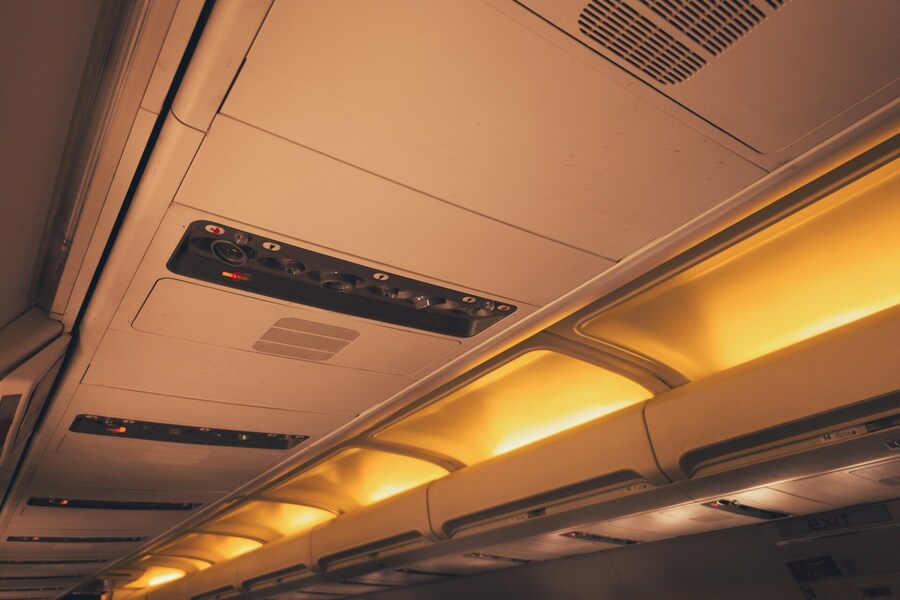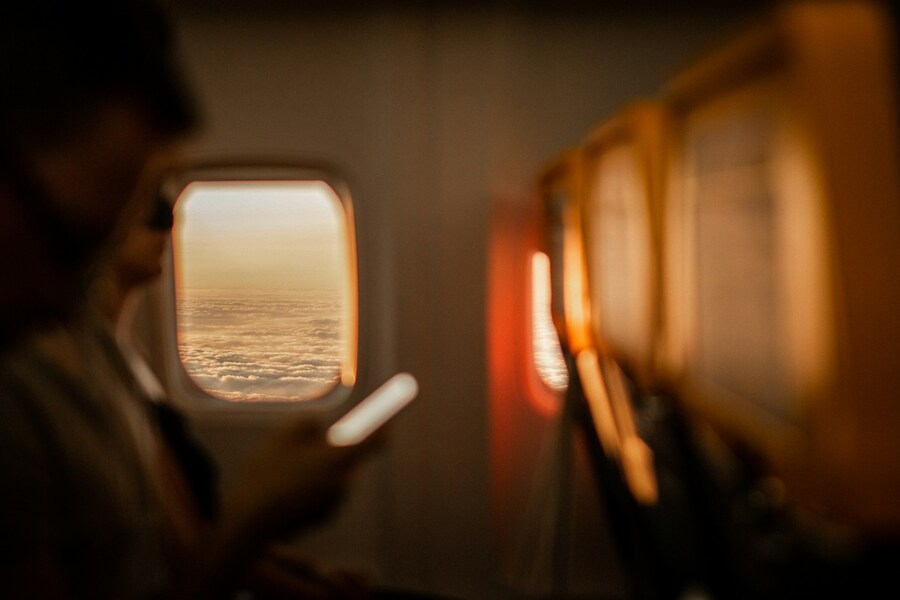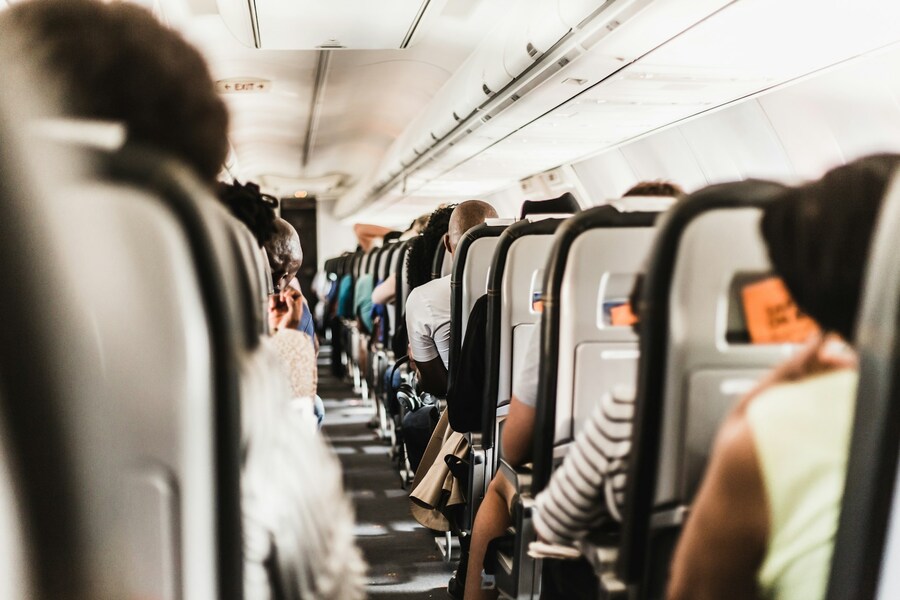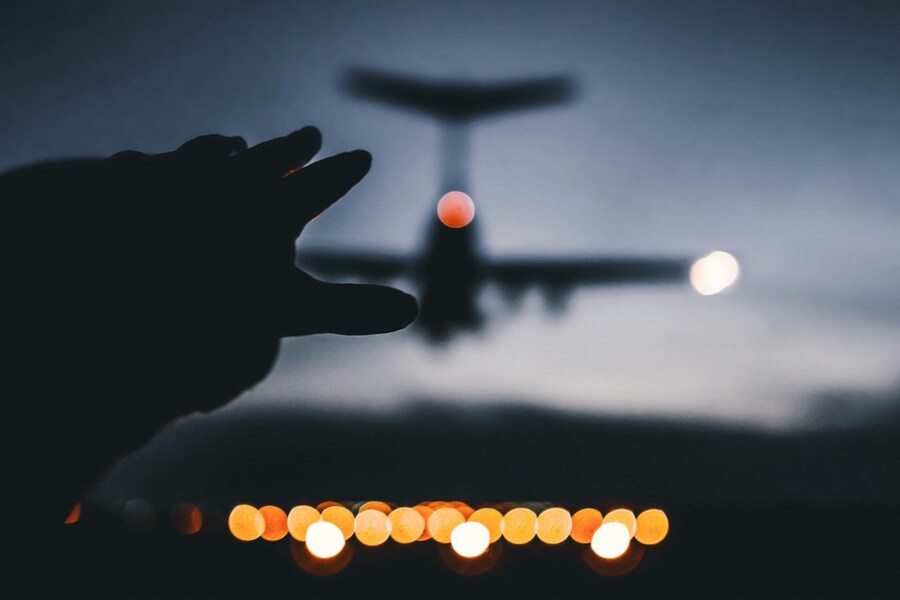Flying can be a stressful experience. From the moment you arrive at the airport and navigate through security checkpoints to the inevitable delays and turbulence, air travel can feel like a gauntlet of challenges. With so many rules and regulations in place, it's easy to feel overwhelmed and unsure of what to expect. But understanding some of the behind-the-scenes reasons for certain procedures can actually make your flight experience more relaxed and enjoyable. For example, have you ever wondered why flight attendants insist on keeping the window blinds open during takeoff and landing? Or what those mysterious pings over the airplane's PA system actually mean? Here are 7 secrets of airplane cabins most passengers don't know. Let's get to the point!
Hidden features on an airplane: what are they?

Source: Mahdi Mahmoodi/Unsplash
Cabin lights serve a purpose
You've probably noticed that the cabin lights on your flight are dimmed during takeoff and landing. Turns out, there are 2 very good reasons for this. First, dimming the lights improves safety. If the lights were to suddenly go from bright to dark in an emergency, it would take precious seconds for passengers' eyes to adjust. With dim lighting during takeoff and landing, our eyes are already adjusted, making it easier to find an exit. Second, dim lights are more relaxing than bright lights and might calm a passenger who struggles with flight anxiety. Some airlines take this a step further by adding colored mood lighting. For example, on JetBlue Airways, passengers will notice the airline's signature calming blue color throughout the cabin during flight.
Those chimes mean different things
We're all used to hearing the chimes that come over the airplane's speaker system during a flight. But if you pay close attention, you'll notice they sound a little different each time. These chimes are used to signal important parts of the flight like when the plane takes off, goes up, and comes back down. They're also used for communication between the flight attendants and the pilots.
Each airline has its own set of rules for these chimes, so they might sound a little different depending on which airline you're flying with. On many airlines, you'll hear 2 chimes right before the plane starts moving down the runway. This usually means the pilots have been given permission to take off, according to airline pilot Jack Herstam.
A few minutes after the plane takes off, you'll hear another 2 chimes. This means the plane has reached an altitude of 10,000 feet. Once the plane reaches this altitude, it's usually safe for the flight attendants to move around the cabin and for passengers to use larger electronic devices.
You'll hear the same 2 chimes again when the plane starts to come back down and passes below 10,000 feet. And when the seatbelt sign turns on and off, you'll hear a single chime along with the light.
During the flight, you might also hear a single chime. This usually means a passenger has pressed their call button to ask for help. According to a popular TikTok video by flight attendant Tommy Climato, a chime that goes from high to low means the flight attendants are trying to talk to each other on the airplane's phone system.
Finally, you might hear 3 chimes. This is very rare and usually means there's an emergency.
The cold temperature is intentional
Passengers sometimes complain about the cold temperature in airplane cabins. If you're lucky, some airlines will provide passengers with a blanket, but it's rare for the flight attendants to turn up the heat in the cabin. That's because the temperature on an aircraft has been set in a very intentional way for your safety. A study by ASTM International found that people were more likely to faint on an aircraft than on the ground due to a condition called hypoxia. The pressurized environment of an airplane cabin can prevent our body from getting enough oxygen, which causes fainting. The warmer the temperature onboard the aircraft, the more likely this is to happen. To prevent passengers from passing out, airlines intentionally lower the cabin temperature. While this might be slightly uncomfortable, it's much safer for your body.

Source: Kaja Reichardt/Unsplash
The air is cleaner than you realize
A common myth about air travel is that being confined in an airplane means you're more likely to share germs and air particles with all the other passengers on board. In reality, modern airliner cabins have advanced HEPA – which stands for high-efficiency particulate air – filtration systems for maintaining clean air quality onboard the aircraft. According to the International Air Transportation Association (IATA), this is the same type of filter used to clean the air in hospital operating rooms. Cabin air is refreshed through this system 20 to 30 times per hour, which is more than double the average office building. Fresh air is brought in from the outside, which flows through the filter and helps to remove viruses and bacteria from the air – making the air you breathe on an airplane cleaner than you think.
Bathrooms can be opened from outside
While there's a lock inside cabin bathrooms for passengers to use, flight attendants also have the ability to quickly unlock the door from the outside. It's usually hidden under the "lavatory" sign on the door, which can be flipped up. This is for passenger safety: in the event of an emergency, flight attendants need to be able to access the bathroom without picking the lock or taking the door off its hinges. It also may be necessary if a passenger has a health scare or needs assistance while in the bathroom, or can also be used for children who are unable to unlock the door themselves.
Window blinds need to be open at times
During takeoff and landing, flight attendants on many airlines will ask that passengers lift their window blinds. Like other rules on an airplane, there's an important reason for this. Open blinds allow the flight staff to see any issues on the ground or on the airplane itself. Passengers might also report unusual circumstances they observe from their windows. Lifting the blinds also allows our eyes to adjust to the conditions outside quickly in case of an emergency. However, while the practice is broadly recommended by international aviation safety organizations like the ICAO, there's no blanket rule in place, so not all airlines will require it.
There's a hidden handrail
Walking down the aisle of a moving airplane can be a wobbly experience – especially when there's turbulence. Most passengers end up grabbing the seats as they walk, which can disturb the people in those seats, but there's actually a better way. If you watch the flight attendants, you'll notice that they repeatedly reach up to the ceiling when they walk down the aisle. That's because there's a built-in handle rail along the bottom edge of the storage compartment, which can be used to steady yourself. Next time, follow the lead of the flight attendants and avoid aggravating fellow passengers – use this secret rail instead.
No more parking lot confusion: find your perfect spot with ParkingNearAirports.io!

Source: Gerrie van der Walt/Unsplash
By the way, we would also like to give you one more helpful tip. Such information will be handy for those who prefer traveling by air and getting to the airport by their own car.
There is no question that a safe parking space must be arranged for your vehicle during a trip. However, in most cases, people aren't ready to spend a lot of money on this. It's a common problem among travelers, as they know that on-site parking (it may seem that it's the best option for this case) is pretty costly. So what can we do then?
We are glad to inform you that our booking platform, ParkingNearAirports.io, offers travelers online reservations for parking just outside airports that are convenient and affordable. Our experienced team is dedicated to providing travelers parking options at over 100 airports in the US and Canada. In addition, the app allows customers to search and compare parking rates at up to 70 percent savings compared to the cost of on-site parking at all major airports.
Being nearby doesn't always mean convenience when it comes to airport parking. Being in terminal parking is not convenient at all. Travelers have to find a spot in a crowded lot, carry their luggage throughout the parking lot, and pay high fees without great service. The off-airport parking provides excellent service with their award-winning customer service representatives available 24/7. In addition, the app looks for lots that offer baggage assistance and 24-hour security for peace of mind.
With our platform, it only takes a few clicks in the app to reserve a parking spot. Guests receive a booking confirmation and a guaranteed parking space upon arrival at the off-airport parking. In addition, the app helps customers locate the most convenient lots to the airport. Cancellations are easy if plans change with hassle-free, refundable cancellations.

Source: Natalya Letunova/Unsplash
Off-airport parking lots often provide free shuttle going back and forth between the parking lot and the airport, removing any worry of traveling to and from the airport or getting stuck in traffic on the way to the airport during peak hours. Arrive on time for flights and receive significant savings with airport parking.
Besides this, we also offer services for top cruise ports in Florida, Louisiana, Maryland, New Jersey, and Texas.
So, let's imagine you're planning a trip to a popular destination. No matter your departure point, ParkingNearAirports.io can help you find discount airport parking to suit your needs. Plus, don't forget about our special airport parking coupons. These coupons can help you save significantly on your parking expenses, often reducing the airport parking cost by up to 50%.
You can explore a wide range of best airport parking deals and learn more about parking options near US and Canadian airports on our official website.






